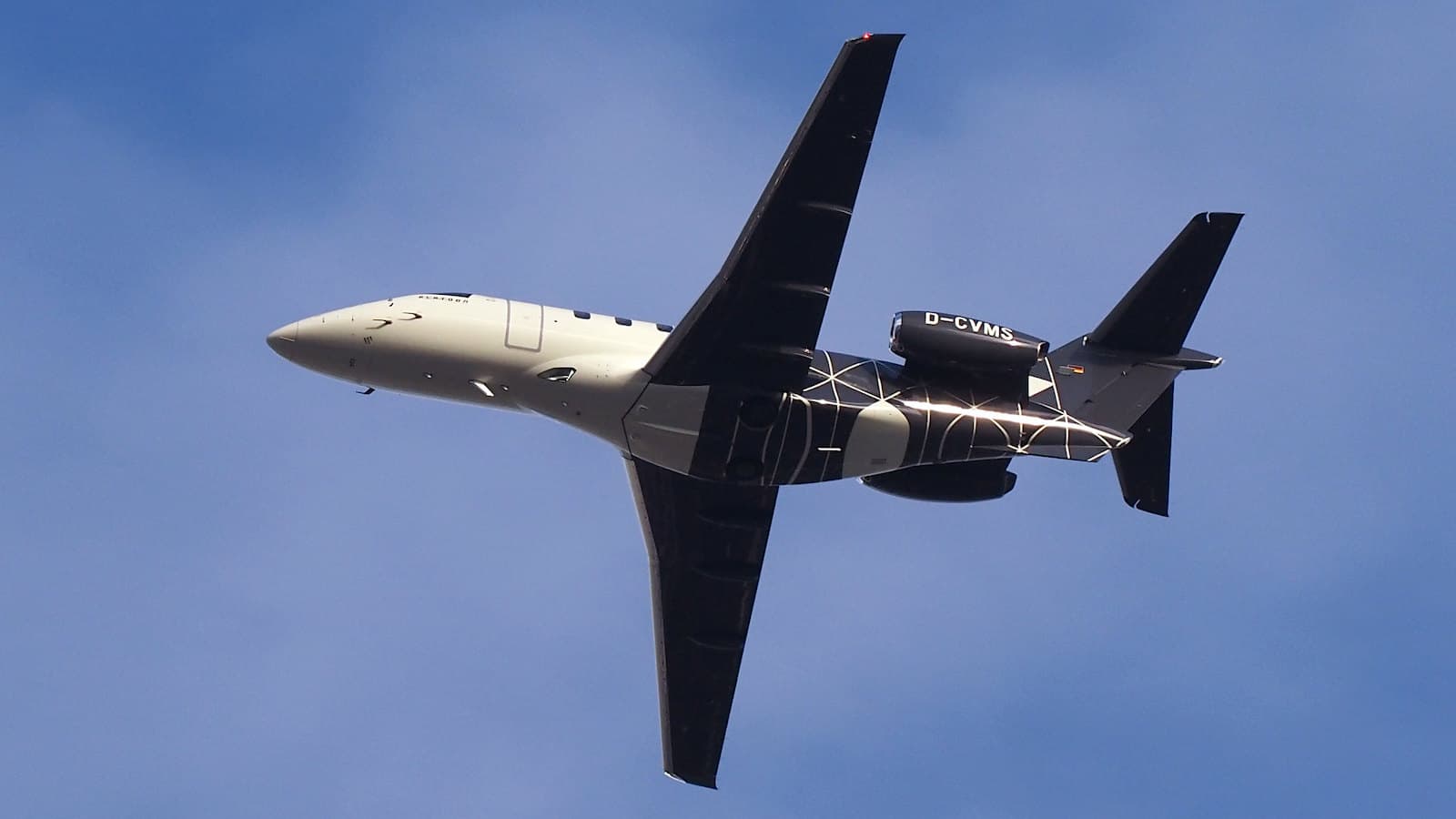
We all know private jets soar high in the sky, but what exact altitudes do they usually fly at?
In this article, we’ll explain the typical ceiling of private planes, and just how their cruising heights compare to commercial aircraft.
In most cases, private jets will be at a cruising altitude anywhere from 35,000 feet, all the way up to 45,000 feet. And while rarely operated at such altitudes, the most capable private jets have a maximum service ceiling of 51,000 feet.
Ultimately, the maximum operating altitude for a private jet comes down to a few factors:
Jet engines rely on oxygen to burn fuel efficiently. As the altitude increases, the air becomes thinner, resulting in decreased oxygen levels. Beyond a certain height, the engines may not be able to generate enough thrust to maintain the aircraft's performance and altitude. Therefore, private jets are certified with a “ceiling”, which is the highest altitude at which it can avoid stalling and safely operate.
Commercial airliners and private jets are equipped with pressurized cabins to maintain a comfortable environment for passengers. There are limitations to how much pressure differential the cabin can handle before structural integrity becomes a concern. As a result, there is an upper limit to the altitude at which the cabin can be safely pressurized.
The design of the aircraft, including factors such as aerodynamics and structural integrity, sets limitations on the maximum altitude at which it can safely operate. Going above these limits could compromise the aircraft's performance or even pose a safety risk.
Aviation authorities such as the Federal Aviation Administration (FAA) in the United States and similar agencies in other countries have established regulations and guidelines for aircraft operations. These regulations often define maximum altitudes for different types of aircraft based on safety considerations and air traffic management.
Private jets typically fly above commercial airliners because they are able to cruise at higher altitudes more efficiently than the larger, heavier aircraft.
Here are examples of ceilings for some airliners:
Airbus A321 - 39,800 feet
Boeing 737 MAX - 41,000 feet
Airbus A380 - 43,000 feet
Boeing 747-8 - 43,100 feet
Most of the time, commercial airplanes won’t even fly at or near their max altitude.
And since private jets are capable of flying several thousand feet higher, this usually results in them having their own, less congested airspace (typically between 41,000 feet and 45,000 feet). In turn, business jets may also be able to avoid traffic, and take more direct routes to get to their destination faster.
Let’s take a look at a real world example from Flightradar24.

Source: Flightradar24
As you can see, flight routes across the Atlantic are pretty congested on a regular basis. Along with commercial airliners, the longest range private jets fly along the North Atlantic Tracks, which are designated paths to keep the air traffic neat and safely separated when flying across the pond.
Private jets, narrow bodies, and larger widebody aircraft will all have different ceilings, and also different speeds, which means some planes on the same path will eventually pass others.
Subsequently, air traffic control (ATC) will be able to “stack” planes on the same route, but safely separated vertically.
Here, you can see some commercial airliners and private jets stacked on the same path.

Source: Flightradar24
This Gulfstream G500 is cruising at 45,000 feet and doing 503 knots.

Source: Flightradar24
7,000 feet below the G500 is this Boeing 777, flying 481 knots.
If you check for yourself, you will probably see airliners flying anywhere from 33,000 - 41,000 feet, while private jets will be somewhere between 37,000 and 45,000 feet.
Several of the best private jets like the Gulfstream G700, Bombardier Global 7500, and the Dassault Falcon 8X all have a service ceiling of 51,000 feet. Thinner air above this height would start to have an impact on engine performance, and become less safe to operate in.
With a terrific tailwind, the fastest private jets can fly as fast as 700 mph (1126 km/h) when cruising around 38,000 to 45,000 feet.
Private jets are designed to provide a smoother and more comfortable flight experience compared to commercial airliners. While turbulence cannot be completely avoided, private jets do have the ability to fly higher at 45,000 feet, where turbulence is less common.
Private jets hit their cruising altitude between 10668 meters - 13716 meters.